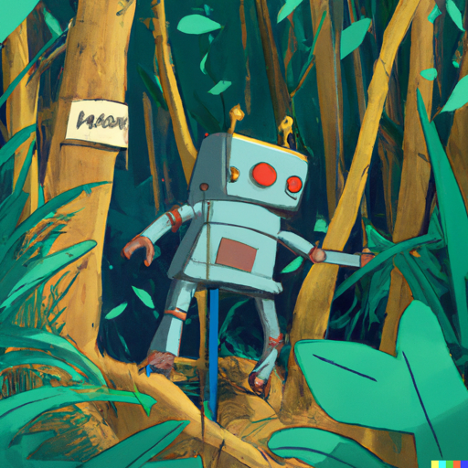 Center for Instructional Technology and Training
Center for Instructional Technology and Training

Last week, my colleague Chris Sharp and I had the opportunity to share our thoughts on AI and assessment design with a large group of faculty and staff. The interest this topic sparked lead to our highest attendance yet at a Tech Byte event. Based on audience participation, it’s clear that many of us humans are eager to think and talk about this new technology’s impact on us, including how it will affect higher education. We’re excited about these new opportunities, but we are also nervous about the implications. What is it about AI that is so compelling and scary?
Generative AI like ChatGPT clearly represents a big step forward in our technological capabilities. It can conjure up paragraphs and paragraphs of natural sounding text about almost any topic, and it can hold conversations with us. In seconds, it can produce images that would take a person years of training and many hours of work to create. This is a huge shift, and change is always scary. Additionally, many of us grew up on media that emphasized the dangers of limitless technological advancement. (Does anybody else say please and thank you to their smart speaker just in case it gains sentience?)
That said, this technology is here. It’s not going away, and it’s only going to get smarter. As intimidating as that is, it also brings the potential for changes that will greatly improve our quality of life, including how we teach and learn. In our Tech Byte, we encouraged the UF community to embrace the use of AI as a means of improving efficiency, building a new type of digital literacy, and offering new opportunities for student engagement, especially in high enrollment courses. If we don’t learn how to effectively use these tools, we won’t be able to teach our students the skills they will need in their future careers.
As a species, we humans pride ourselves on our intelligence: we’ve even named ourselves Homo sapiens. It’s inevitable that the creation of a technology that can replicate our biggest evolutionary advantage feels threatening; however, as educators, we must look to the future and prepare our students to face the challenges and opportunities head-on.
If you missed this event but you want to know how to build your familiarity with generative AI, conquer your fears of the robot revolution, and leverage these technological capabilities to improve your students’ learning and career readiness, I encourage you to watch our recording. And as always, please reach out to us if you have any questions or want help brainstorming ways of utilizing AI in the assessments you create.
Image credit: An image generated by DALL·E from the prompt “a robot exploring a jungle in the style of (Where the Wild things Are)”
Tags: AI, Assessments, Faculty Development, Professional Development